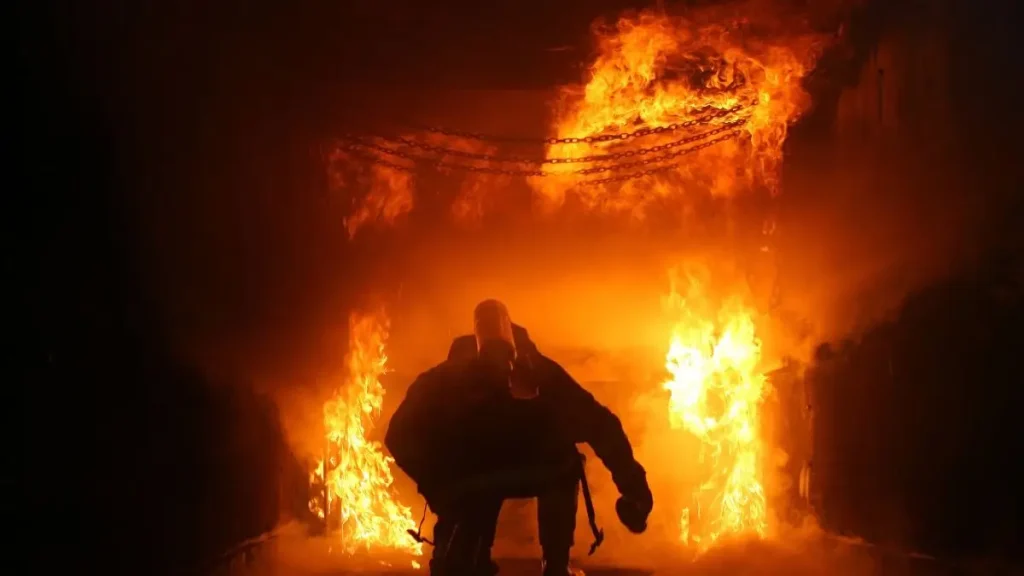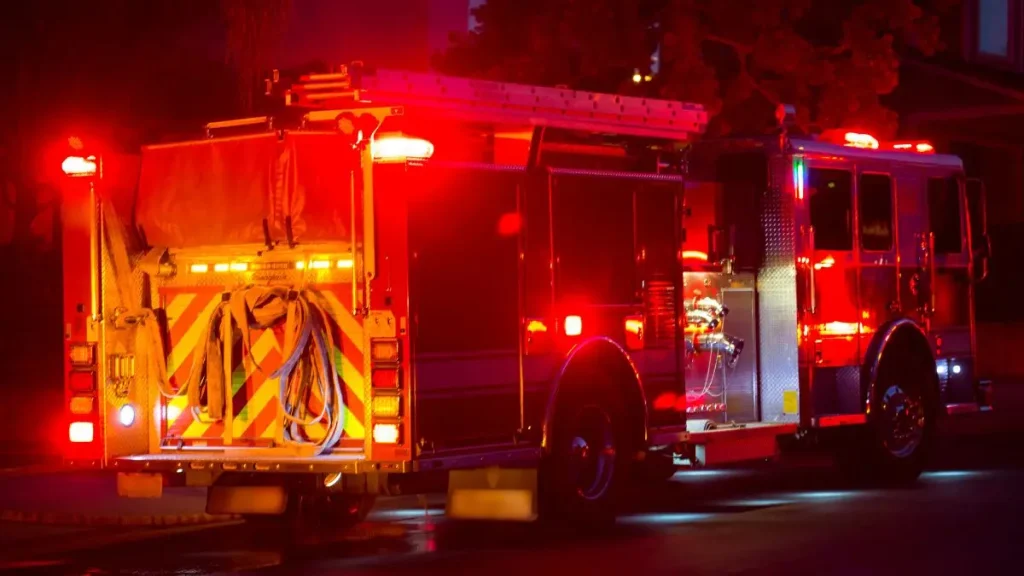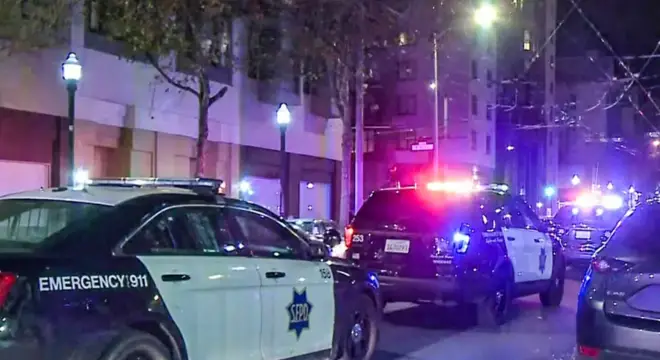North Knoxville Fire: Blaze Damages Home, Sparks Investigation
I was scrolling through local updates when this one caught my eye—a house fire on Foxhaven Road, right here in North Knoxville. It happened around 1:30 in the afternoon on July 16, a time when most of us are either at work or grabbing a late lunch.
According to the Rural Metro Fire Department, the blaze started in an attached garage. And while the fire didn’t make it into the main living area, heat and smoke still managed to leave their mark. No injuries were reported, which is a relief. But for the people living there, this wasn’t just another news headline. It was a normal Wednesday turned upside down.
When I looked into the details, what stood out was how quickly firefighters acted. Their fast response likely stopped the fire from swallowing the whole home. That kind of speed matters. In house fires, minutes—sometimes seconds—can make the difference between minor damage and total loss.
That’s why stories like these aren’t just about “what happened.” They’re a reminder to ask: Would you be ready if this happened to your home?
What would you grab first? Do you know where your fire extinguisher is? Let me know in the comments.
What Sparked the Fire?
I wish I could tell you exactly what caused the fire on Foxhaven Road, but as of now, the cause is still under investigation. Rural Metro Fire hasn’t released those details yet—and honestly, that’s not unusual in cases like these. Some fire investigations take days, even weeks, especially when damage obscures the source.
But here’s the thing: When I hear about a garage fire, my mind immediately jumps to a few usual suspects—maybe yours does too. Electrical wiring gone bad, something flammable stored too close to a heat source, maybe even a car battery malfunction. We store so many things in our garages without thinking twice: paint cans, propane tanks, tools with frayed cords.
You might be wondering: Could this happen to my garage? And the truth is, if we’re not careful, it absolutely could. I’m not saying that to scare you—but to remind both of us how fragile our routines really are.
So while officials figure out the what and why, maybe now’s a good time to walk into your own garage and ask: What here could ignite?
How Much Damage Was Done?

According to WATE, the fire was contained to the garage—but smoke and heat didn’t stop at the door. The living space of the home was also impacted, though not by open flames. That kind of secondary damage might not look dramatic from the outside, but anyone who’s dealt with smoke-drenched furniture, melted wiring, or heat-warped walls knows it’s a nightmare in its own right.
When I think about my own home, I realize how many things could be affected without ever catching fire—my family photos, that worn-in sofa that’s been there for years, even the air ducts that silently run above us.
You might think, “Well, at least the fire didn’t reach the bedrooms.” And while that’s true, smoke damage can still render a home unlivable for days or weeks. Restoration is costly—and not just financially. It takes a mental toll too.
So here’s my takeaway: if a fire can start in a garage and still shake up an entire household, maybe it’s time we give fire prevention more attention than we usually do.
Have you ever dealt with fire or smoke damage in your own home? Share your story or safety tips in the comments below—your experience could help someone else.
Fire Safety Lessons for Homeowners
I’ll be honest—I never used to think much about fire safety in my garage. Like many people, I assumed a smoke alarm in the hallway was enough. But after hearing stories like this one, I started digging deeper into garage-specific fire risks. And what I found? Eye-opening.
According to the National Fire Protection Association (NFPA), garages are one of the most common origins of house fires—especially when they’re attached to the main home. Why? Because they often lack smoke detectors, have limited ventilation, and are full of flammables like gasoline, paint thinners, and power tools.
So here’s what I started doing—and what I’d suggest you do too:
- Install a heat alarm or garage-rated smoke detector
- Keep combustibles off the floor and away from outlets
- Never plug multiple high-powered tools into a single strip
- Inspect your garage door motor and wiring annually
- Store lithium batteries in metal containers or fireproof boxes
You don’t have to go overboard—but trust me, a few changes now can save a ton later. The garage might feel like a “separate zone,” but if it’s attached to your home, it’s just one spark away from becoming your worst day.
I recently came across a short update in a local WhatsApp news channel where residents were sharing tips about storing batteries safely and using heat alarms in garages—small reminders that can make a big difference.
Is This Part of a Bigger Pattern in Knoxville? Let’s Take a Look
When I read about the Foxhaven Road fire, I couldn’t help but wonder—Is this just a one-off, or is Knoxville seeing more of these lately? So I started digging through recent reports, and it turns out this isn’t isolated.
Just few days, firefighters in White Center dealt with another major house fire. And earlier, there was one in Iowa where a resident got injured just trying to cook dinner.
Now, I’m not saying Knoxville is suddenly a hot zone. But think about it: We’ve had high summer temperatures, more use of cooling systems and electric tools, and in many older neighborhoods, aging electrical infrastructure.
There are talking about sudden power surges and increased fire calls lately. Whether it’s climate-driven or just a string of bad luck, the signs are there.
You and I might not control the weather, but we can definitely control how prepared we are. Looking at these trends, I’d say it’s time to move fire safety up on our checklist.
How Community & Firefighters Responded?

I don’t say this enough, but I have deep respect for our first responders—especially when I read how fast they got to Foxhaven Road. According to the initial report, they managed to contain the fire before it reached the entire house. That kind of response time? It doesn’t just save walls and roofs—it protects lives.
Imagine if no one had been home to call it in. Or if crews had arrived just five minutes later. We’d probably be reading about a total loss, or worse.
It’s moments like these that remind me why community support for our local fire departments matters. Whether it’s attending their open houses, sharing safety tips, or donating when possible—it all comes full circle.
So next time you see a Rural Metro truck on your street, maybe give them a wave. Because on days like July 16, they didn’t just show up—they delivered.
Just weeks ago, an Illinois house explosion killed a married couple, showing how home-related disasters can escalate in seconds, whether it’s fire or blast.
What Comes Next for the Family—and What You Can Learn From It
After a fire like the one on Foxhaven Road, the toughest part often begins once the flames are out. I’ve seen it before—families walking through a home that looks fine from the outside but smells like burnt plastic inside, clothes ruined, ceilings stained, memories half-charred.
We don’t know yet if the family here had to relocate temporarily, or how long their repairs will take. But if you’ve ever dealt with insurance after a disaster, you know it’s no small task. Between adjusters, contractors, and paperwork, it can feel like fighting a second fire.
That’s why I always tell people—your insurance policy isn’t something to ignore until it’s too late. Check your fire coverage, review your deductible, and keep a digital record of your belongings. And if you rent, make sure your renter’s policy includes fire damage.
Because one day, you might be in their shoes. And when that day comes, you’ll be glad you prepared now.
Final Thoughts
When I first read about the North Knoxville home fire, it felt like just another local headline. But as I looked deeper, I realized it could easily be my street. Or yours.
This wasn’t a total loss, thankfully. But it was a reminder of how fragile comfort can be. One spark. One wire. One moment. That’s all it takes.
So let’s not just scroll past this. Let’s walk into our garages tonight, take a closer look, and ask ourselves: If it happened here, would I be ready?
Want more updates on real incidents and home safety tips? Check out our full coverage in the Home Incidents category.
Disclaimer: This article is based on publicly available news reports and ongoing investigations as of July 2025. Details may evolve as authorities release more information. Always refer to official statements and fire safety professionals for confirmed guidance.


